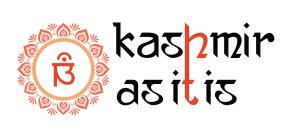Burzahom site contains elevan megalithic structures.  Out of these structures five structure still stand tall while as rest others have fallen. These structures are dated back to the neolithic age. Many items of historical importance, like bone and stone tools, have been found here. This site also has number of dwelling and burial pits, which confirms the human activity in Kashmir is ages old. Archaeological excavations have revealed four phases of cultural significance between 3000BC to 1000BC which tell the tales of Neolithic, Megalithic and Post-Megalithic era. The site is on an ancient Pleistocene lake bed.
Out of these structures five structure still stand tall while as rest others have fallen. These structures are dated back to the neolithic age. Many items of historical importance, like bone and stone tools, have been found here. This site also has number of dwelling and burial pits, which confirms the human activity in Kashmir is ages old. Archaeological excavations have revealed four phases of cultural significance between 3000BC to 1000BC which tell the tales of Neolithic, Megalithic and Post-Megalithic era. The site is on an ancient Pleistocene lake bed. Burzahom means Birch, a tree species. The roofing material of the excavated housing area confirmed the existence of the tree even in the pre-historic Neolithic times. The first excavation of this site was done in 1936 carried out by Yale-Cambridge expidition. Later another detailed investigation was done between 1960 and 1971. Skeletal remains of the Neolithic people found at Burzahom are similar to those found in Harappa of Indus valley civilization.
Burzahom means Birch, a tree species. The roofing material of the excavated housing area confirmed the existence of the tree even in the pre-historic Neolithic times. The first excavation of this site was done in 1936 carried out by Yale-Cambridge expidition. Later another detailed investigation was done between 1960 and 1971. Skeletal remains of the Neolithic people found at Burzahom are similar to those found in Harappa of Indus valley civilization.
Burzahom site has been named as the Northern Neolithic Culture in view of its distinctive structural features with profusion of tools made of bones and stones and tools representing the ritualistic practices. This site has now been nominated as the UNESCO World Heritage Site. Some historians state that Vedic Aryan culture extended till Kashmir, but as per the archeological facts and ancient remains, Aryans in Kashmir theory still is a question mark. The initial excavations in Burzahom are both, vertical as well as horizontal. The site is full of pits – circular or oval shaped dug in karewa soil formation – which were inferred as dwelling units. Some deep pits have ladder access. Some shallow pits close to housing pits contained bones of animals and also tools made of bones and stones. Carbon dating establishes that this site is dated before 2.357BC. There are also sites found during the second excavations shows the burial culture of both humans and animals.
The initial excavations in Burzahom are both, vertical as well as horizontal. The site is full of pits – circular or oval shaped dug in karewa soil formation – which were inferred as dwelling units. Some deep pits have ladder access. Some shallow pits close to housing pits contained bones of animals and also tools made of bones and stones. Carbon dating establishes that this site is dated before 2.357BC. There are also sites found during the second excavations shows the burial culture of both humans and animals.
Deep oval shaped pits were located with skeletons of humans positioned along with the bones of animals, were considered to be the burial sites. The site is maintained in the form that has been excavated, representing the natural setting of the Neolithic people. The exposed pits and the layout are well protected.
Article has been compiled from
Archaelogical survery India – Kashmir
Wikipedia








